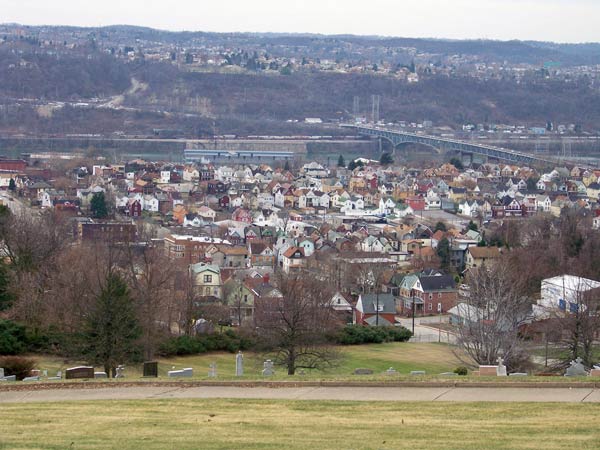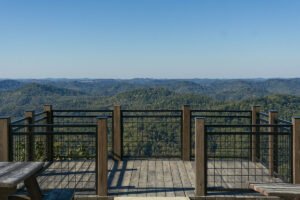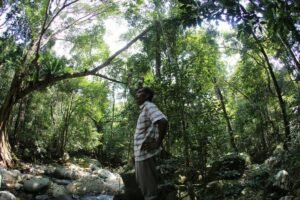
August 1, 2018; City Lab
At NPQ, we have regularly reported on the scourge of environmental racism—that is, the systemic location of toxic sites in places that disproportionately impact communities of color—and the struggle for environmental justice. As NPQ’s Derrick Rhayn wrote a few months ago, “The scope of environmental racism has come into the public awareness recently, with high profile cases like the water crisis in Flint and the Keystone XL Pipeline dramatically highlighting the consequences and implications of environmental racism on communities of color.”
Braddock, Pennsylvania is surely less high profile than Flint or Keystone XL. But as Brentin Mock and David Montgomery point out, Braddock shows how the colocation of multiple sources of toxicity can have devastating public health impacts.
Writing in City Lab, Mock and Montgomery note that in Pennsylvania, “an environmental-justice area” is one that is defined as a community whose population is at least 30 percent people of color and more than 20 percent low-income. Braddock is one of these towns. A small former steel mill town located on 0.6 square miles of land, Braddock today is home to 1,841 people—88.2 percent fewer than the number who resided there in 1940. The town is presently 61 percent Black, with a 30.3 percent poverty rate.
“The reach and scope of Braddock’s toxicity is emblematic of what it means to suffer environmental injustice in the US, where people of color, and with limited resources, bear the brunt of pollution,” Mock and Montgomery emphasize.
Some key stats:
- 73 percent of homes are at risk for lead paint
- 6,700 air permit violations were found at Clariton Coke Works between 2012 and 2015
- 90 percent of residents are at risk of exposure to fine particulate matter in the air
- 35 percent of children that live near the Braddock and Clariton Steel mills have asthma
In Allegheny County, where Braddock is located, Mock and Montgomery note that “between 2008 and 2012, white infants had average infant mortality rate of 4.75 deaths for every 1,000 live births, while the rate for black infants was 13.73.” Brandy Rawls, who was born in Braddock, “grew up there with asthma, eczema, and other allergies—all conditions that she says run through her family.” They add, “Rawls herself lost her son, who was delivered stillborn in 2010, on Christmas Day.”
Sign up for our free newsletters
Subscribe to NPQ's newsletters to have our top stories delivered directly to your inbox.
By signing up, you agree to our privacy policy and terms of use, and to receive messages from NPQ and our partners.
The data are clear. Rawls’ work has focused on reproductive health, but she realizes that to promote health, she has to be an environmentalist too. “I really think that in order to improve birth outcomes in Allegheny County, we have to become more interdisciplinary,” says Rawls.
Jamin Bogi, who works for Group Against Smog and Pollution (GASP), a Pittsburgh-based environmental nonprofit, observes, “Yes, it was amazing that our steel won World War II, but we also know that the air pollution shortened our lives by 10 or 20 years, and we know more now than we did then, so we can do something about it.” The American Lung Association, Mock and Montgomery note, currently ranks Allegheny County twelfth in the nation for year-round pollution from particulate matter—the particles of dust, soot, and smoke.
Lead also impacts Braddock, as it is present not only in old homes, but in abandoned factories and mills. All told, Mock and Montgomery write, Braddock is “one of the most polluted cities in a county that’s already considered one of the most polluted in America.” They add, “The asthma rates are so bad, and among Black children in particular, that it has triggered a chronic absenteeism crisis in the schools.”
And now there is a new pollution threat: fracking. “Last December,” Mock and Montgomery report, “New Mexico–based Merrion Oil and Gas announced plans to develop six wells for hydraulic fracturing for natural gas” on a former local steel site. “There are risks from fracking operations that could further pollute the air and water of surrounding communities, hampering children’s cognitive and women’s reproductive abilities,” they add.
“For me,” says Edith Abeyta, a local resident, “there is this paradox of what’s happening in Pittsburgh, not very far away where a lot of people and foundations and government officials are working to make the region more green and sustainable and livable. But then we have actions like this with fracking coming, and it seems like the antithesis of what’s happening in the rest the region.” She and 100 of her neighbors succeeded in getting the city council to vote against fracking in 2014. But then Merrion Oil and Gas announced its plans to build wells and drill in North Versailles, a small municipality that borders Braddock.
Pollution, of course, does not respect municipal boundary lines. A 2016 Johns Hopkins study found that “Pennsylvania residents with the highest exposure to active natural gas wells operated by the hydraulic fracturing—or fracking—industry are nearly twice as likely to suffer from a combination of migraine headaches, chronic nasal and sinus symptoms, and severe fatigue.”
Mock and Montgomery note that Abeyta has no background in environmental science. But, like Rawls, she and her neighbors have become environmentalists out of necessity. “I just wanted to be involved in shaping the place where I live,” Abeyta says.—Steve Dubb











